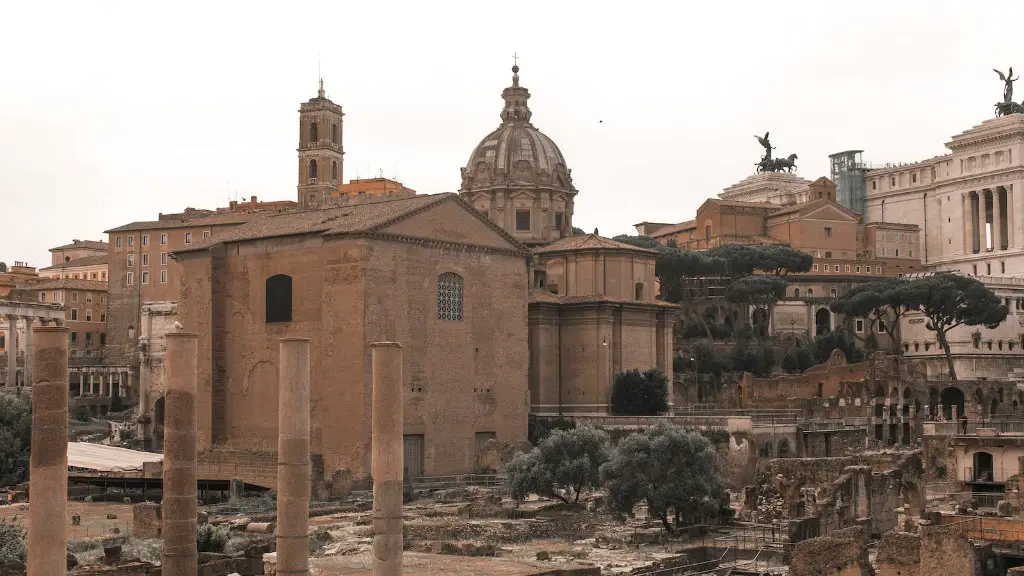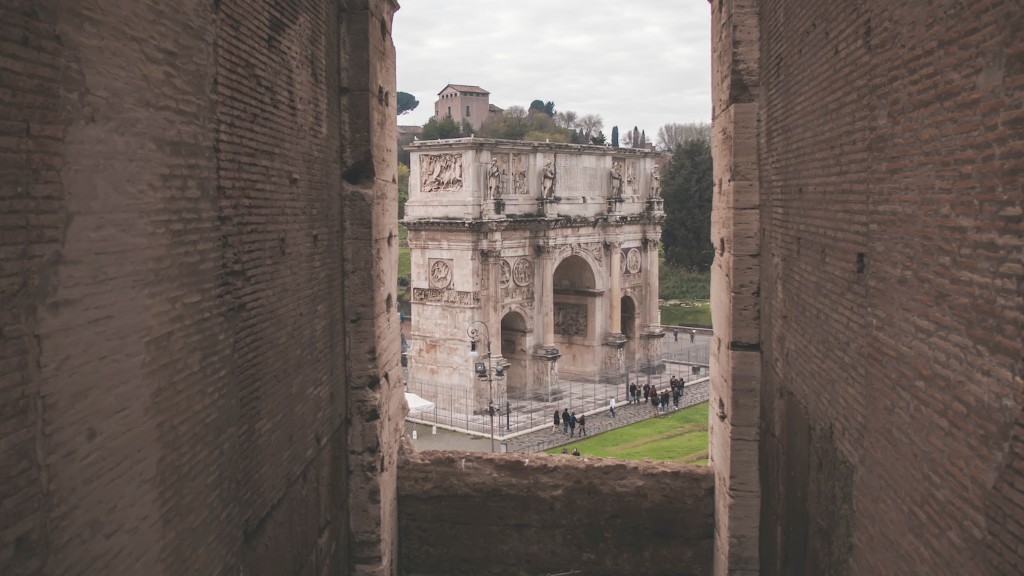Family Structure and Life
The Roman family was a very important institution in the Roman Empire. The paterfamilias was the father of the family, who was in charge of the financial, religious and legal aspects of the family. He had the power to punish and to punish his children. The Roman marriage was an alliance between two families, not a union between an individual and his spouse. Children were viewed as a responsibility of both families, as the marriages were usually arranged. It was important for at least one son to have a son of his own or he could be passed up for inheritance. Women in Ancient Rome were not considered citizens but instead were seen as property of their fathers and husbands.
Men had many social and legal obligations within the family. Fathers were to produce legitimate heirs and had the power to unplanned marriages. They were also to protect and provide for the family financially and spiritually. Roman families would typically adhere to a religion, and would teach their children the principles of their religion.
Women were expected to obey their husbands and fathers, though there were some notable exceptions such as Livia who was able to persuade her husband Augustus to adopt her son Tiberius as his heir. Women had no control over their own finances and could not even ask for a divorce in Ancient Rome, as they were expected to remain loyal to their husbands regardless of the circumstances.
Religion and Cults
Religion in Ancient Rome was polytheistic, meaning that there were many gods believed in and worshipped by the people. Though the gods were seen as the creators and protectors of Rome, different cults were created to honor and venerate certain gods more than others. An example of this is the cult of Cybele, a mother goddess that originated in the Greek lands and became popular in the Roman Empire. She was worshipped as the great mother goddess of fertility and her cult was showered with opulent offerings.
Apart from cults, the Roman people also held regular festivals throughout the year. These festivals were held in honor of the gods and goddesses, with processesions, offerings and games being celebrated. There were also specific festivals that corresponded with the different seasons, such as the Lupercalia and Saturnalia.
Religion was very much intertwined with Roman society. It was the duty of the paterfamilias to perform all the religious duties of his family and to ensure that his family were following the rules of the gods. The gods were also seen to influence the outcome of battles and other military engagements, and so it was expected that soldiers would also pay their respects to the gods prior to battle.
Law and Government
At the top of Roman society was the Emperor. The Emperor was a living god that had absolute power over the Roman Empire. He was believed to be the direct descendant of the god Jupiter and was thus, untouchable and all-powerful. Though the Emperor had absolute authority, there were certain checks and balances in place to limit his power. For example, the Roman Senate, which was made up of elites from all over the Roman Empire, had the power to pass laws, debate important issues, and advise the Emperor on matters.
The Roman legal system was based on the law of the Twelve Tables, which were set down by the Roman Republic in 450 BCE. These laws governed all aspects of Roman life and were divided into three distinct categories. The first covered civil, criminal and family law, while the second and third dealt with administrative, military and religious matters. The laws were rarely enforced, however, as the Roman Empire was very tolerant of its citizens’ behavior.
Roman government was divided into three branches: the executive, legislative and judicial. The executive branch was headed by the Emperor who appointed governors and magistrates to administer the provinces. The legislative branch, or Senate, was the most powerful branch and passed laws that applied to all citizens. The judicial branch was headed by the Senate and its members were responsible for judging legal disputes and interpreting the laws.
Military and Expansion
The Roman military was one of the most powerful and professional forces of its time. It was responsible for expanding the Roman Empire to unprecedented heights, conquering vast swathes of land and establishing the world’s first large-scale empire. The military was divided into two branches: the legions and the auxiliaries. The legions were composed of citizens and were the main fighting force of the Roman Empire. The auxiliaries were non-citizens who provided vital support to the legions in battle.
Most of the military’s successes were due to its impressive organization and strict discipline. Soldiers were expected to follow orders to the letter and were punished severely for any infractions. This gave Roman armies a reputation for ruthlessness and effectiveness. Additionally, the Roman army was one of the few forces of its era to have a professional medical corps and engineering corps, making it even more formidable.
The Roman Empire was founded in the year 753 BCE and dissolved in 476 CE. During this period, it expanded quickly through both conquest and colonization. By the time of its dissolution, the Roman Empire stretched from Britain in the west to Syria in the east, with a population of over 60 million people. This vast empire was united under a single set of laws, a single language and a single religion, which were all based on Roman customs.
Art and Architecture
The art and architecture of Ancient Rome is one of its most enduring legacies. Roman art was heavily influenced by the Greeks, though the Romans did create their own unique style. Roman art primarily depicted scenes from everyday life, including battles and military escapades, gods and goddesses, and everyday activities. Roman art also made use of abstract designs and developed its own style of realism, which was characterized by a sense of grandeur and power.
Roman architecture was also heavily influenced by the Greeks, though the Romans also developed their own unique style. The Romans were renowned for their engineering skills and used columns and arches prolifically in their buildings. Their buildings were constructed with a keen eye for symmetry and balance, making them some of the most impressive structures of their era.
Their most famous architectural achievement was the Colosseum, which was created to host gladiator fights, animal hunts and other spectacles. It was an impressive structure, with its four stories, 80 entrances and seating capacity of 50,000. The Colosseum is one of the most iconic symbols of the Roman Empire, signifying a grand civilization.
Economy and Trade
The Roman economy was based on agriculture, trade and industry. Romans developed a complex economy with a strong emphasis on trade and bartering. Rome was a major trading hub for goods from Europe, North Africa and the Middle East, and established trade routes throughout its empire. Grain, olive oil, and wine were some of the most commonly traded commodities, and these products were shipped from one place to another in the form of caravans.
The Roman government was involved in trade as well, launching missions to explore new trade routes and trading posts around the Mediterranean. Rome also played a role in the development of new currencies and loans in the form of coins, which were widely accepted across Europe and the Middle East. Roman coins were not only used in Rome, but were also used as far away as India.
In terms of industry, Romans were adept at manufacturing a wide array of products. They had developed advanced technologies for metalworking, glassmaking and masonry. They also created stone monuments, statues, and other iconic works of art that shaped the Mediterranean world.
Culture and Education
Roman culture was highly influenced by Greek culture, which had reached its peak during the time of Augustus. Education was highly valued in Roman society, and wealthy citizens would typically send their children to schools for a classical education. Schools taught pupils about literature, history, rhetoric, philosophy, math and music.
Romans also had a passion for sports and entertainment, with chariot races in the Colosseum being particularly popular. Romans also developed a strong love for theater, poetry and literature. Roman literature typically focused on war, honor, fame and politics, and some of the most notable works of literature of the era include Virgil’s Aeneid and Ovid’s Metamorphoses.
The Roman Empire was also a major center of culture and intellectual thought. Its influence can still be seen today in philosophy, science, religion and more. The basis of much of Western civilization was formed during this era, which makes it one of the most important societies in history.
Conclusion of Society in Ancient Rome
Ancient Rome was an influential and powerful civilization in the ancient world. It had a complex social hierarchy, a strong government, and a vibrant culture. Roman art, architecture, literature and sports are still prominent today, and their influence on the world is undeniable. Ancient Rome left an indelible mark on the world, and its legacy can still be seen in many different aspects of our lives.





